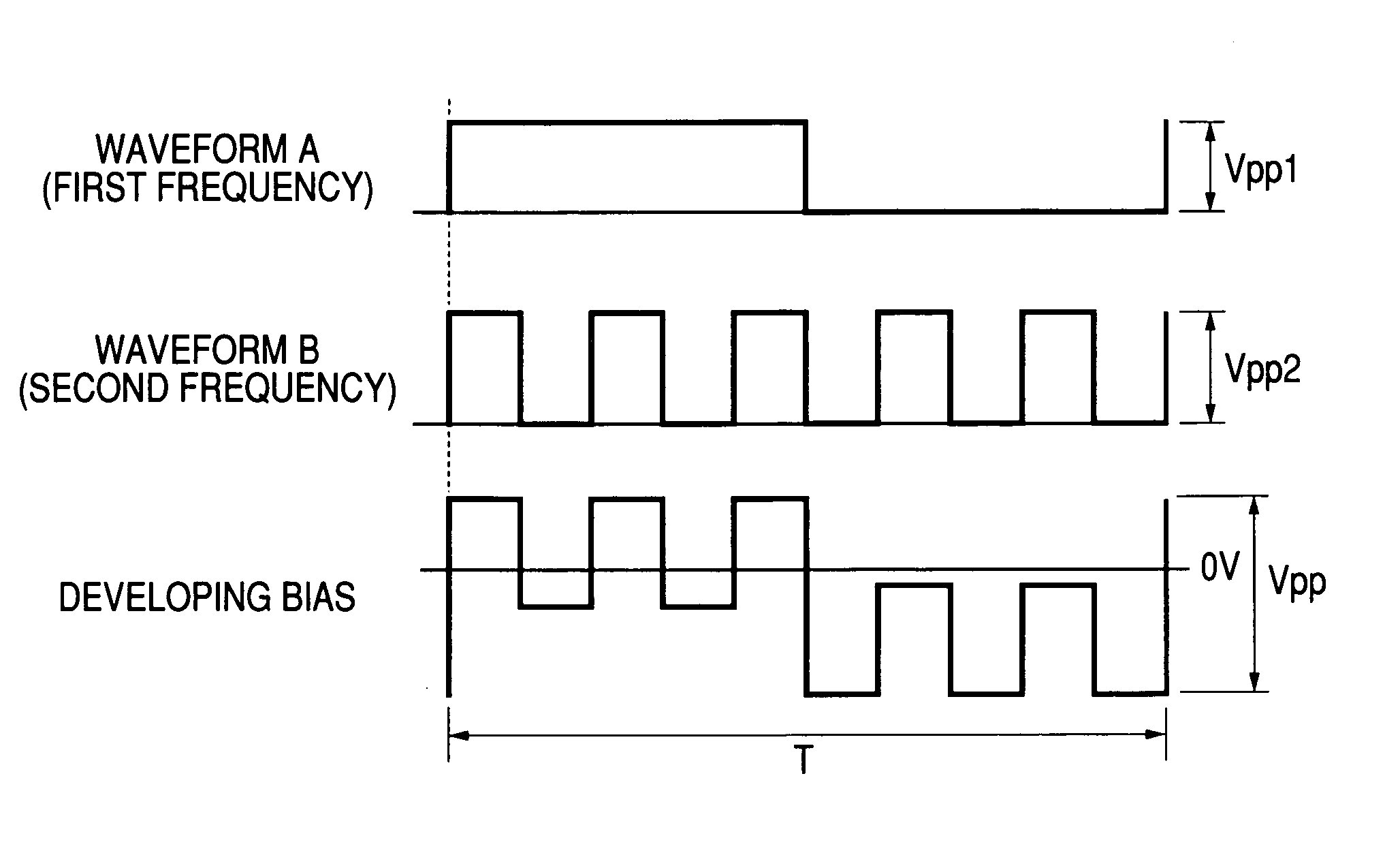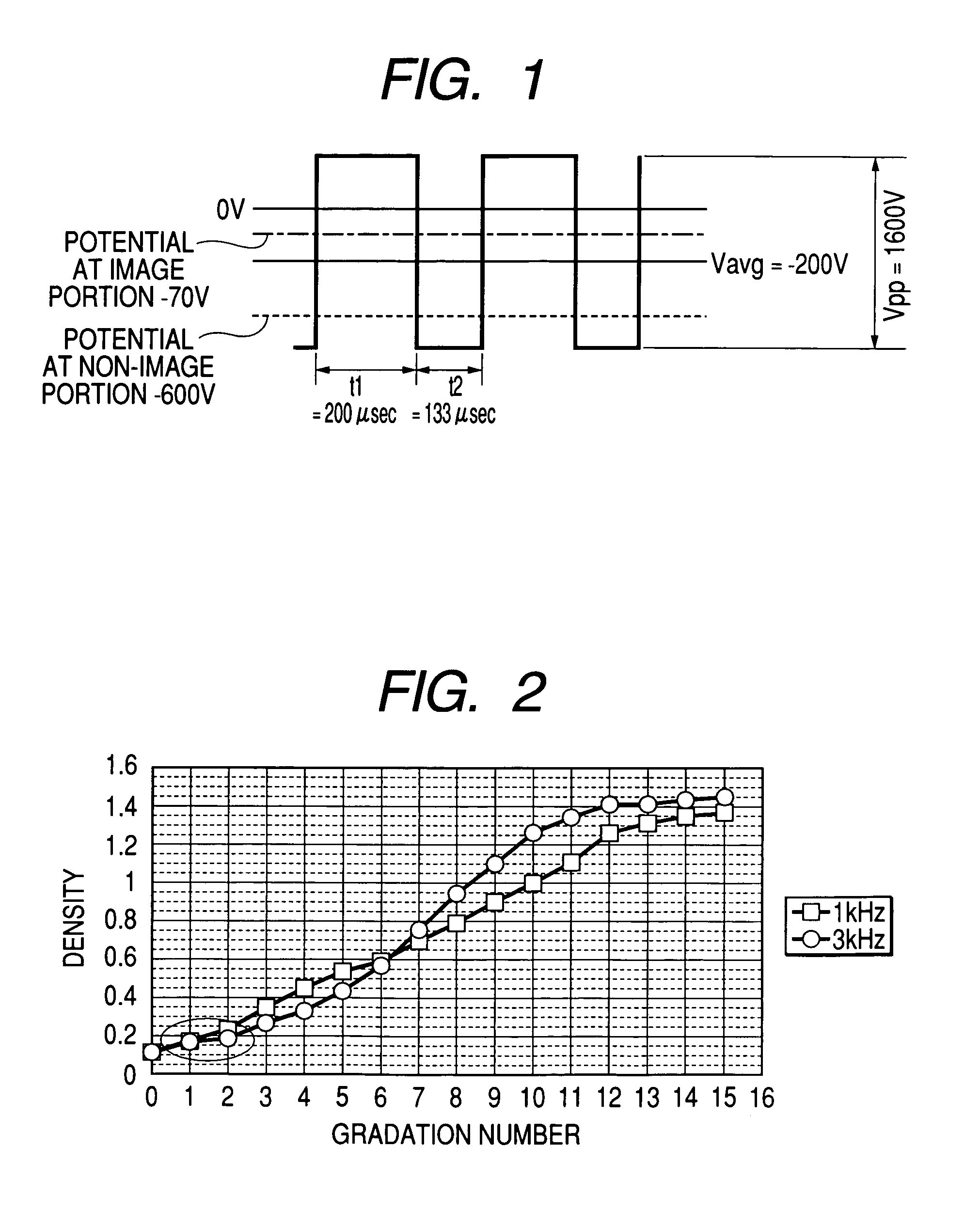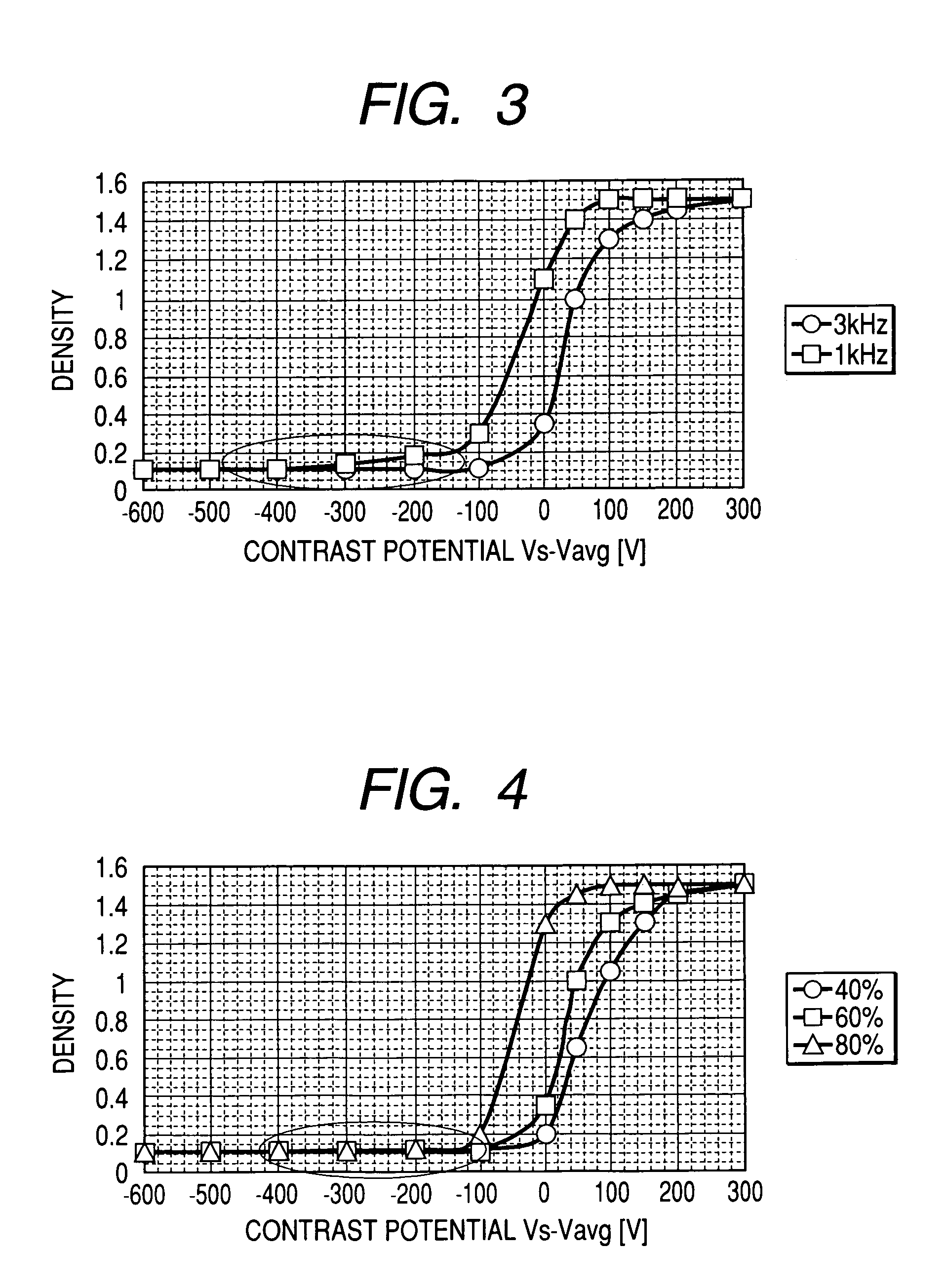Method of forming image and image forming apparatus
a technology of image and forming apparatus, applied in the field of forming image and image forming apparatus, can solve the problems of inability to improve the linearity of gradation -characteristics, difficult to increase the density of a highlight, and difficult to achieve both. , to achieve the effect of high densities
- Summary
- Abstract
- Description
- Claims
- Application Information
AI Technical Summary
Benefits of technology
Problems solved by technology
Method used
Image
Examples
first embodiment
[0034]A development bias was set by superimposing a waveform A of a square wave having a frequency of 1 kHz and an amplitude Vpp1 of 1075 V and a waveform B of a square wave having a frequency of 3 kHz and an amplitude Vpp2 of 325 V on one another to provide an AC component of the development bias on which a DC component Vavg of 220 V was further superposed. The density of an image was measured with the AC component of the development bias set at the above-described conditions relative to a potential Vs of −70 V at the image portion of the photosensitive member and with the average potential Vavg of the DC component varied from −370 V to +530 V, and contrast potential γ-characteristics as shown in FIG. 7 were obtained.
[0035]As shown in FIG. 7, a sufficient image density of 1.45 is obtained at a contrast potential of 150 V, and characteristics are achieved that allow a sufficient image density to be obtained by setting the average potential Vavg of the DC component of the development...
second embodiment
[0038]A development bias was set by superposing a waveform A of a square wave having a frequency of 1 kHz and an amplitude Vpp1 of 600 V and a waveform B of a square wave having a frequency of 5 kHz and an amplitude Vpp2 of 800 V on one another to provide an AC component of the development bias on which a DC component Vavg of 220 V was further superposed. A sufficient image density of 1.45 was obtained at a contrast potential of 180 V. Specifically, a sufficient image density was obtained by setting the average potential Vavg of the DC component of the development bias at −250 V relative to a potential of −70 V at the image portion of the photosensitive member. Fogs on the background of the image were sufficiently reduced by setting the potential Vs at the photosensitive member with a potential difference of −320 V from the average potential Vavg of the DC component of the development bias. Therefore, an image without fogs on the background can be obtained by setting the potential a...
PUM
 Login to View More
Login to View More Abstract
Description
Claims
Application Information
 Login to View More
Login to View More - R&D
- Intellectual Property
- Life Sciences
- Materials
- Tech Scout
- Unparalleled Data Quality
- Higher Quality Content
- 60% Fewer Hallucinations
Browse by: Latest US Patents, China's latest patents, Technical Efficacy Thesaurus, Application Domain, Technology Topic, Popular Technical Reports.
© 2025 PatSnap. All rights reserved.Legal|Privacy policy|Modern Slavery Act Transparency Statement|Sitemap|About US| Contact US: help@patsnap.com



